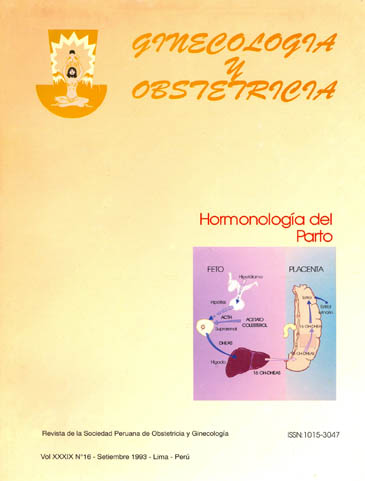Winding partogram alert patients south of Lima
DOI:
https://doi.org/10.31403/rpgo.v39i1364Abstract
In 1991 and 1992, the "Maria Auxiliadora" Hospital 1500 was chosen maternity cases, of which 587 were nulliparous and 913 multiparous. To all of them they applied the following criteria: chronology of pregnancy between 37 and 41 weeks, absence of pathology, delivery start and spontaneous evolution, no medication during childbirth normal pelvis, cephalic presentation and newborn 2500-4000 gr with score 6 higher Apgar at birth. After applying these criteria, we finally met 317 nulliparous (with intact membranes 209 and 108 with ruptured membranes) and 306 multiparous (231 with intact membranes and 75 with ruptured membranes). All patients were supine during labor and were controlled in the obstetrics center using the partograph designed by CLAP and make careful records graphics from 4-5 cm of cervical dilation on. Data from the dilation of the cervix in relation to time were processed by computer and the 10th percentile was calculated, that is the maximum acceptable time delay cervical dilation inched up to the second stage, and thus the curves built alert for each of the four subgroups. The slope followed in the process of dilation of the cervix is the same in our maternity cases than reported by CLAP, but times are leaning slightly to the right, particularly in the subgroup of nulliparous with intact membranes.Downloads
Downloads
Published
2015-07-15
How to Cite
Távara Orozco, L., Punis Reyes, N., Parra Vergara, J., Frisancho Gil, O., Chumbe Ruiz, O., Cajas, A., & Ayasta Rodríguez, C. (2015). Winding partogram alert patients south of Lima. The Peruvian Journal of Gynecology and Obstetrics, 39(16), 44–49. https://doi.org/10.31403/rpgo.v39i1364
Issue
Section
Artículos Especiales
















